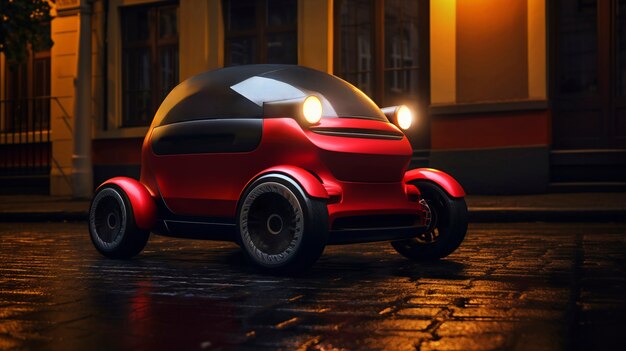
Kia has finally introduced the EV3, which has the potential to become the top choice for budget-friendly electric cars. This new model retains many design features of the popular Kia EV9 but is more compact and expected to be more affordable.
The Kia EV3 will face stiff competition from several other electric vehicles in the low-cost market segment, including the Hyundai Ioniq 5. The Ioniq 5 is well-regarded for its stylish design, impressive range, and fast charging speed.
So, how do the Kia EV3 and Hyundai Ioniq 5 stack up against each other? Let’s take a closer look at their design, interior, performance, range, and availability.
Design-wise, the Kia EV3 and Hyundai Ioniq 5 are quite distinct. The EV3 has a boxy SUV-like appearance but is smaller than a typical SUV. It features Kia’s signature Tiger Face design with slim split headlights and a prominent logo at the front. The rear showcases split taillights and a narrow rear window, giving it a sleek look, especially for fans of the EV9’s design. The EV3 measures 169 inches in length, 73 inches in width, and 61 inches in height.
On the other hand, the Ioniq 5 has a unique design with Hyundai’s pixel light elements, featuring dual square headlights and square pixel taillights. It’s a visually striking car and one of my personal favorites. The Ioniq 5 is larger at 182.5 inches long, 74.4 inches wide, and 63 inches high. Despite the EV3 looking large in images, it’s actually smaller than the Ioniq 5, which is more of a crossover-sized vehicle.
When it comes to interiors, both cars share several design elements since Kia and Hyundai are sister companies under the Hyundai Motor Group. Both the EV3 and Ioniq 5 feature a dual display setup at the front, with one for infotainment and another for instrument monitoring. The Ioniq 5 supports CarPlay and Android Auto, and it’s highly likely that the EV3 will too since all modern Kia vehicles support these systems.
The EV3’s cabin includes recycled materials on the dashboard and seats, giving it a high-quality, premium feel. Its square shape contributes to a bright and spacious environment, even though it only has two rows of seats compared to the EV9. Meanwhile, the Ioniq 5’s interior is equally impressive. Having tested several Ioniq 5 models, I found them to be comfortable and somewhat luxurious, considering their price. Both cars have two rows of seats, and the Ioniq 5 features a flat floor in the front row to enhance spaciousness.
In terms of performance, this is where differences become more apparent. The EV3 is designed to be a budget car and, therefore, might not perform as well as higher-end models. The top-spec version of the EV3 can go from 0 to 60 mph in 7.5 seconds, which is decent but not exceptional. It will only be available in a rear-wheel drive, single-motor variant.
The Ioniq 5, however, is more performance-focused. The base model for 2025, the Ioniq 5 SE Standard Range, achieves 0 to 60 mph in 7.4 seconds. More advanced all-wheel-drive models can do it in just 4.4 seconds. So, even the slowest Ioniq 5 outpaces the fastest EV3 in terms of acceleration.
Comparing the range and charging capabilities is a bit tricky since not all details for the Kia EV3 are available yet. The EV3 will come in two battery sizes: a Standard Range 58.3 kWh and a Long Range 81.4 kWh. Kia estimates a maximum range of about 373 miles under the Worldwide Harmonized Light Vehicles Test Procedure (WLTP). However, the more stringent EPA estimates might place the long-range version around 300 miles and the base model closer to 200 miles.
The Ioniq 5’s range varies depending on the model. The base rear-wheel-drive model offers 220 miles, while higher-end trims have a range of 303 miles. The all-wheel-drive versions have a range of 260 miles. Though the WLTP range for the Ioniq 5 is about 500 km, the EV3 might still outperform it in range.
The EV3 uses a 400-volt architecture, impacting its charging speed. It can charge from 10% to 80% in 31 minutes, which is decent but not outstanding. In contrast, the Ioniq 5’s 800-volt architecture allows it to charge much faster, reaching 10% to 80% in just 18 minutes.
For those looking to buy an EV right now, the Hyundai Ioniq 5 is available and starts at $41,800. On the other hand, the Kia EV3 has been announced but is not yet available. It will first launch in Korea, then Europe, and potentially other markets in 2025. Pricing is expected to be lower than other Kia models, possibly starting around $30,000 to $40,000.
The Kia EV3 aims to be Kia’s budget-friendly electric car, with the Ioniq 5 positioned as a slightly superior offering due to its larger size, faster charging, and better performance. While we await more details about the EV3, the Ioniq 5 seems to be the better car overall, though the EV3’s lower cost could make it a more attractive option for budget-conscious buyers.